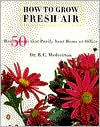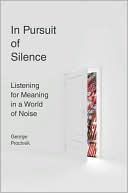The Human Side of Disaster
When disaster strikes, people react, and usually, fear levels rise. Temporarily, however, one motivation supersedes all others: survival of self and those nearby, especially loved ones. Based on the author’s years of research and teaching experience, The Human Side of Disaster scientifically evaluates human responses in the face of disasters. This examination informs emergency managers and response teams and teaches them how to anticipate human behaviors in-crisis.\ The book begins with four...
Search in google:
When disaster strikes, people react, and usually, fear levels rise. Temporarily, however, one motivation supersedes all others: survival of self and those nearby, especially loved ones. Based on the author’s years of research and teaching experience, The Human Side of Disaster scientifically evaluates human responses in the face of disasters. This examination informs emergency managers and response teams and teaches them how to anticipate human behaviors in-crisis.The book begins with four scenarios based on interviews and real events that introduce the human side of disaster. The stories examine how attention to, or lack of, preparedness, response, recovery, and mitigation affect outcomes. Each subsequent chapter refers back to the original Experiences chapter and provides insights that can be applied not only to events such as hurricanes, tornadoes, earthquakes, and floods, but also to man-made threats including industrial accidents and acts of terrorism. The author explores how people’s responses can be predicted, the long term effects of disaster on the psyche, and the key issues involved in recovery.A balanced interpretation of research, results, and experience, the book demonstrates how traditional warning methods and high-tech systems can work together to improve communications, evacuations, and reconstruction efforts. It highlights the role of the human element in any disaster situation and demonstrates how to use that element as part of a planned disaster response.
Foreword William A. Anderson Anderson, William A.1 Experiences 1The Taxi 2The Earring 5The Honeymoon 8The Ceiling 12The Insights 172 The Problem and Approach 19The Danger around You Is Increasing 20The Many Faces of Disaster 27The Approach 37The Insights 403 Hear That Siren? 41Who Panics and Why 43Neutralizing Threat Information 46Doing It Right 48But Not Everyone Responds the Same 54The Insights 604 It Can't Be Done 63That Lady Named Carla 64A Disaster Subculture? 66The Mythology of Car Wrecks 68"Resisters? We'll Arrest Them!" 69Confirmation: A Likely Action 75Families Are the Units 76The Insights 795 Shall We Leave? 81Pathways to Evacuation 81Where Do They Go? 87"We Wanna Go Home" 91Evacuation Facilitators 93An Aside: Crisis Relocation Planning and Homeland Security Advisory System 99The Insights 1046 Why Me? 107Victim Responses 108The Disaster Syndrome: Another Myth Exploded 109Heroes: They Are for Real 112Helpers: How Many Are There? 116"Where Is My Daughter?" 121But There Are Constraints 122The Insights 1267 Volunteers? You Bet! 129The Flood Breakers 129Are Volunteers Like Yachts! 133The Utopian Mood 134Unveiling the Many Forms of Volunteerism 137The Insights 1438 Organized Disorganization 145Raining in Indianapolis 146"But We Deal with Emergencies Daily" 149Sorting Out Organizational Responders 152Is Communication the Problem? 154Social Map: Lake Pomona Communication Structure 158Cooperation Is Not Enough 162The Insights 1689 Life in a Fishbowl 169The Bitch Phase 169Looting Fears 171BadDreams 176Short-Term Oscillations 180Windows of Opportunity 183"When Can We Go Home?" 184The Insights 18610 What about My Psyche? 189An Atypical Example 190Modal Patterns 191Patterned Variations 193Kinfolk and Friends 198"This Is My Mother" 200The Insights 20311 What Must Be Done? 205Variable Perceptions of Risk 206Disasters Are Nonroutine Social Problems 211Professionalism in Emergency Management 214Strategies for Maintaining Organizational Integrity 225Disaster Response Coordination Strategies 229Concluding Principles 234Notes 237Suggested Readings 287Index 293
\ From the PublisherThis book is the culmination of a career-long quest to translate decades of research findings to students, emergency management professionals, and the general population. … He has succeeded with a style of writing that is personal, non-technical, and highly informative.\ —Gary Kreps, The College of William and Mary\ …an excellent book that presents well-documented research findings in an entertaining and engaging style. … expands on important disaster-related knowledge beyond the typical academic and professional communities. It is therefore unique among texts, and contributes much to our understanding of human behavior in disaster situations.\ —David McEntire, Department Chair and Professor, University of North Texas\ … a unique and much needed book. It grows out of Drabek’s lifelong commitment to not only conducting basic and applied research but also to passing on vital knowledge…what readers will find is a sound and highly readable discussion of insights and principles on the social and behavioral aspects of disasters…anyone interested in exploring human aspects of disaster, regardless of their locale, will find much food for thought…a welcome addition to the literature in the field.\ —William A. Anderson, Ph.D., National Research Council, National Academy of Science\ … an entertaining case-based look at human response to disaster—puncturing myths, pointing out truths, and exploring the progress of disaster from warnings to ‘why me?\ —Natural Hazards Observer\ One of the main strengths of the book is the easy flow and readability of the text. The personal experiences and informal writing style allow the reader to be immersed in the book. The author's expertise is evident throughout the book and is backed by rigorous research. The book should be required reading for college students, emergency planning personnel, policy makers, and for anyone who works in emergency and disaster relief. It is a great read that is hard to put down.\ —Marlis Glenda Anne Bruyere, University of Atlanta, Ontario, Canada, in the Journal of Social Science\ \ \








